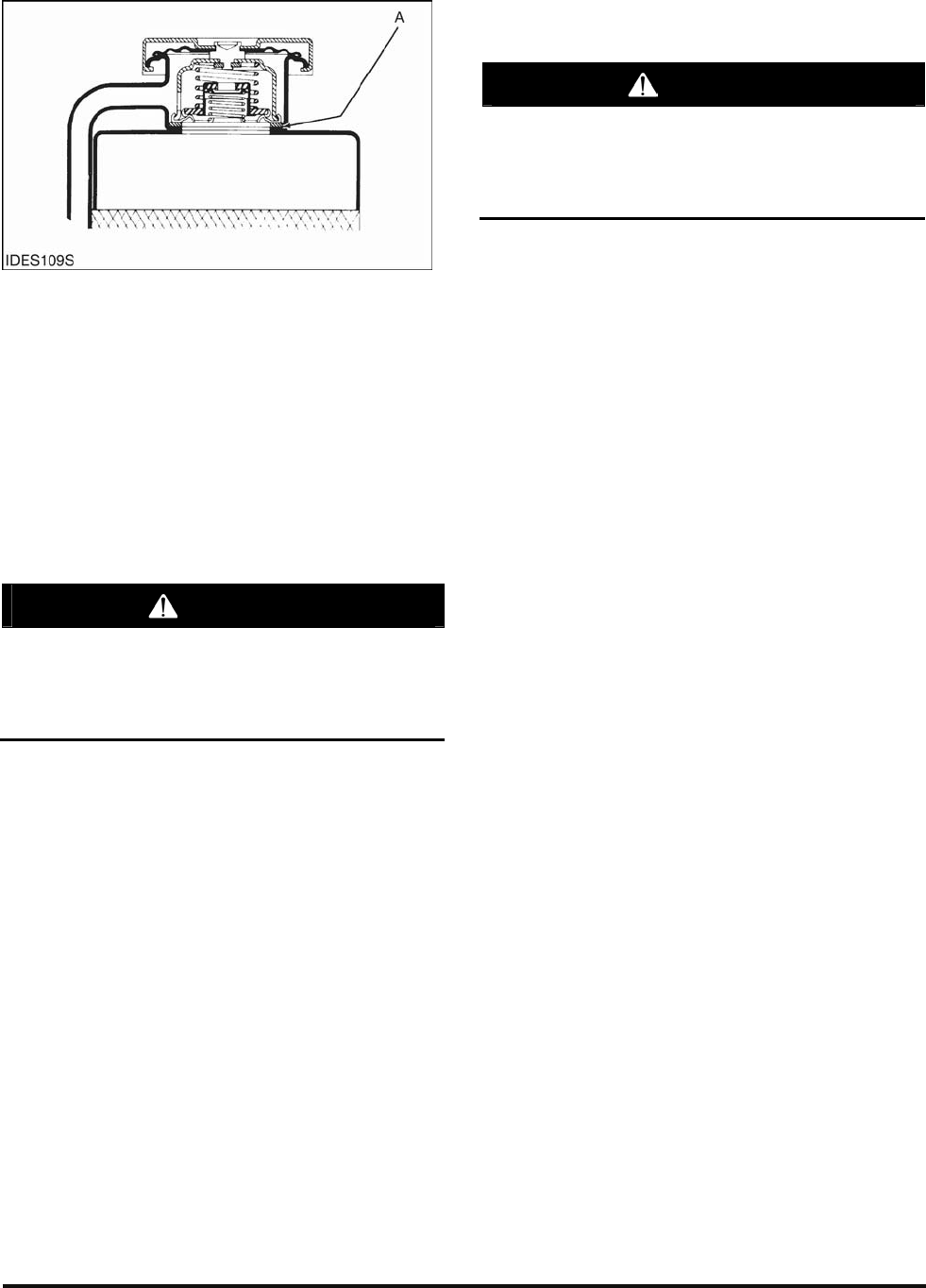Service manual
Table Of Contents

G420F(FE) Service Manual Chapter 3. Engine Mechanical System 56
Pressure Cap Test
Pressure Cap Diagram
(A) Sealing surface of cap and radiator.
One cause for a pressure loss in the cooling system
can be a bad seal on the pressure cap of the system.
Inspect the pressure cap carefully. Look for damage
to the seal or the sealing surface. Any foreign
material or deposits on the cap, seal or seal or
sealing surface must be removed.
To check the pressure cap opening pressure, do the
following procedure.
WARNING
If the engine has been in operation and the
coolant is hot, slowly loosen the pressure cap to
the first stop and let the pressure out of the
cooling system, then remove the pressure cap.
1. Remove pressure cap from the radiator.
2. Put the pressure cap on the Cooling System
Pressurizing Pump Tool.
3. Look at the gauge for the pressure that makes the
pressure cap open. It must be as follows:
A403658………76 to 100 kPa (11 to 14.5 psi)
4. If the pressure cap is bad, install a new pressure
cap.
Cooling System Leak Check
To test the cooling system for leaks, use the
following procedure:
WARNING
If the engine has been in operation and the
coolant is hot, slowly loosen the pressure cap to
the first stop and let the pressure out of the
cooling system, then remove the pressure cap.
1. Remove pressure cap from the radiator.
2. Make sure the radiator is full (hot) or nearly full
(cold) of coolant.
3. Attach the Cooling System Pressurizing Pump
Tool to the radiator filler neck.
4. Pump the pressure to 20 kPa (3 psi) more than
the rated pressure of the cap.
5. Check the radiator for outside leakage.
6. Check all connections and hoses of the cooling
system for outside leakage.
7. If there is no outside leakage and the pressure
reading on the gauge is still the same after 5
minutes, the radiator and cooling system do not
have leakage. If the reading on the gauge goes
down and there is no outside leakage, there is
leakage on the inside of the cooling system.
Make repairs as necessary










